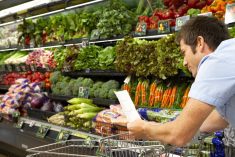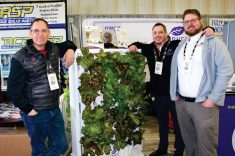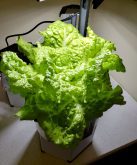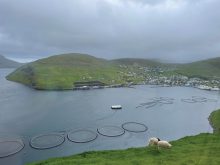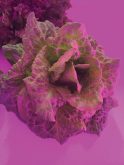Outside snow is piled high and despite the bright sun, it’s a frigid Winnipeg afternoon. Cars whiz by on McPhillips Street.
But out of sight of traffic and the railway tracks, fish swirl past the windows of two blue tanks and lettuce, chard and herbs dangle roots from bobbing Styrofoam rafts. In a warm, sunlit room of the Manitoba Building Trades Institute, fresh food is growing.
Last spring, MBTI — located in central Winnipeg — opened its aquaponics greenhouse. Aquaponics combines farming fish (aquaculture) and growing vegetables in a water-nutrient solution (hydroponics). Facility manager Carmen Grey recently toured the Co-operator through the greenhouse.
The greenhouse is a platform for Winnipeg students and other interested community members to learn about food, science and business.
“We’re hoping that more and more people come through here and start their own (aquaponics operation),” said Tanya Palson, MBTI’s director of communications.
MBTI has two aquaponic systems. Each system starts at a tank with capacity for about 75 fish — in this case, tilapia.

They’re a freshwater fish originally from Africa that have been found to thrive in aquaponics systems and tanks.
Waste and water from their tank flow into a smaller tank where the largest waste drops to the bottom and can be emptied out if necessary. Water runs into another tank filled with balled-up netting, which acts as a surface area for the nitrification process. Here, naturally occurring micro-bacteria turn fish waste into usable nutrients for the plants.
The water then flows through a degassing tank, which adds oxygen, and goes to the plants.
Romaine lettuce, mint, dill, basil and Swiss chard grow on Styrofoam ‘rafts’ with their roots dangling in the water. They get a mix of light from windows and grow lights.
Read Also
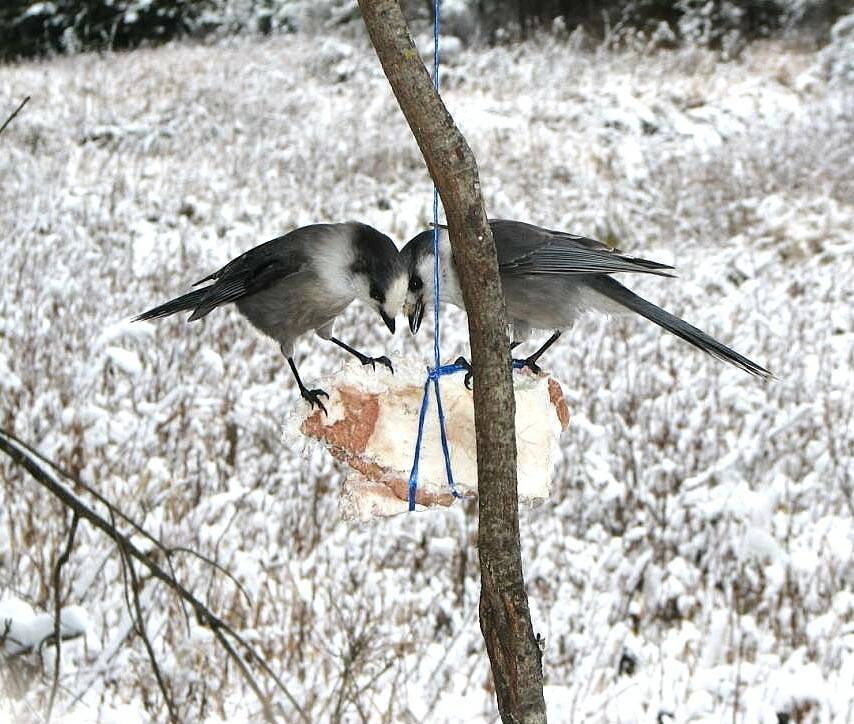
Hunting with whiskey jacks
Canada jays, or whiskey jacks, are bold little deer hunting pals that don’t mind getting close, if it means a piece of the offal or deer fat left over from a successful forest hunt in Manitoba.
The plants extract the nutrients from the water and the water returns, clean, to the fish.
“They’re acting like a filter,” Grey explained.
“It’s a very unique and interesting, harmonious relationship between fish, plants and micro-bacteria and they all work together to form this ecosystem,” she said.
The MBTI system is called a ‘deep water system,’ meaning the plants sit in water at all times. Other systems may incorporate a clay-based medium to grow the plants, and water may ebb and flow through the plant roots, Grey said.
In a bit less than a year, the two systems, which comprise four ‘rafts,’ have produced about 350 pounds of leafy greens. It takes about four weeks to grow a head of romaine lettuce.
The first harvest of tilapia is expected to produce 200 pounds of fish, Grey said.
The food is donated to Fireweed Food Co-op’s “Waste Not” program, which works with community organizations to feed families in need while reducing food waste.
The greenhouse is a teaching space.

Students from the Seven Oaks School Division assembled the system, Grey said. Students and teachers from the school division take over the greenhouse three days per week, during which they manage the facility, pack produce and get exposure to the business side of growing food, Palson said.
The future hope is for students to do a “Dragons’ Den”-style pitch to local restaurateurs and supply chain people, Palson added.
MBTI has hosted virtual workshops for people to learn about aquaculture and it’s run a summer camp in and around the greenhouse. Other schools’ groups have also looked to collaborate with them.
Going forward, MBTI hopes to be a resource for more people who want to understand aquaculture, Palson said.
The greenhouse ties into MBTI’s sustainability and social responsibility goals, Grey told members of the Winnipeg Food Council in a January 24 live-streamed meeting.
Aquaponics can grow vegetables year round, making it possible to get fresh, local veggies in the dead of winter. This reduces the cost (monetary and environmental) of shipping vegetables from the south, she told the council.
The system takes two inputs — fish food and energy, an April 2020 Forbes article says.
“Both can be sustainable if sourced properly,” the article says.
Otherwise, the system doesn’t require chemical additives or fertilizers. Despite literally being a water-based system, Forbes said aquaponics can reduce water use 90 per cent compared to a conventional, irrigated system.




